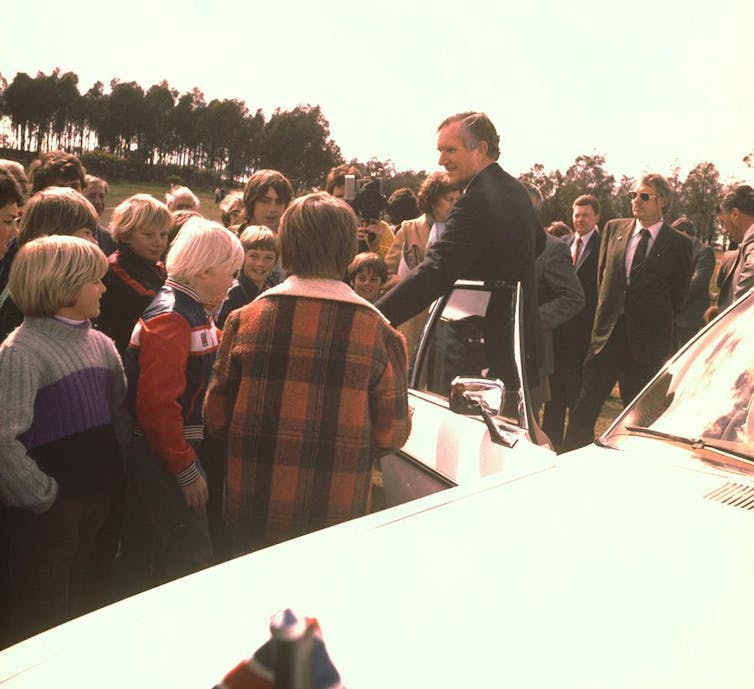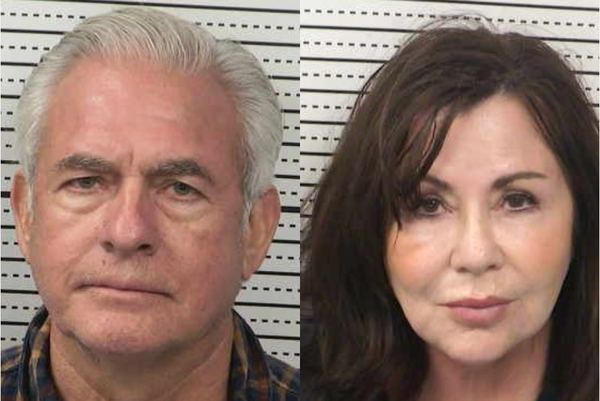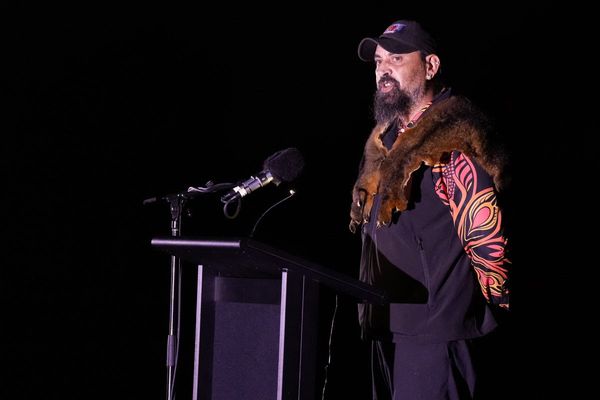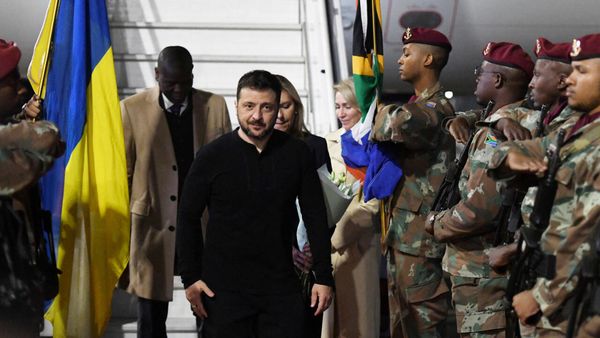When Australians vote on the Voice to Parliament referendum on October 14, ballots from the Northern Territory and the ACT will be treated differently from those of the states. The same goes for votes cast by residents of Norfolk Island, Christmas Island and the Cocos (Keeling) Islands.
In fact, for most of Australia’s history, territory voters haven’t had a say in referendums at all.
To many, this seems unfair and hard to justify. So, how did we arrive at this point? And should we change the rules so territory voters are treated like everybody else?
Not all referendum votes are equal
The Australian Constitution can only be changed if the people agree to it at a referendum. Section 128 says a proposal for constitutional amendment must obtain “a majority of all the electors voting” and a majority of electors “in a majority of the States”. This is sometimes called a “double majority”.
But state and territory ballots are not treated equally. Votes cast by territory residents count only towards the first half – the national majority. Territory ballots are set aside when it comes to working out whether a proposal has won enough support “in a majority of the States”.
As a result, territory voters don’t have a huge influence over referendum outcomes. Territory populations are small, so any ballots cast are subsumed into the national count. A referendum would have to be very close for territory votes to make a difference.
History helps to explain how we settled on this approach to the referendum franchise. When the Constitution came into being at federation in 1901, the regions we know as the Northern Territory and the ACT did not exist. They were part of South Australia and New South Wales, respectively, and the people living there were able to vote at referendums. The Constitution guaranteed this – it required that proposals for constitutional change be submitted to electors “in each State”.
But in 1911, when both of those regions became federal territories, the people living there lost their referendum voting rights.
Over the next few decades, territory residents had no say on a whole raft of constitutional reforms. The inequity of this arrangement was highlighted at the 1967 referendum, which asked Australians to give the Commonwealth power to make laws about Aboriginal and Torres Strait Islander peoples and include them in the population count.
Read more: ‘Right wrongs, write Yes’: what was the 1967 referendum all about?
More than 90% of electors voted “yes” in a moment of national consensus that is rightly celebrated. But that milestone is blemished by the fact that the many Indigenous people living in the NT (and the ACT) at the time were unable to cast a ballot on this measure.
It took a referendum in 1977 for residents of the territories to finally be given the right to vote at referendums. Prime Minister Malcolm Fraser asked Australians to vote “yes” to a proposal to require referendum questions to be put to electors “in each State and Territory”.

This reform was met with almost unanimous approval in the parliament. The only opposition came from Liberal Party senators Ian Wood and Reg Wright. They argued the Constitution was a compact between the Commonwealth and the states, and that it was inappropriate for territories to have a say on whether changes should be made to it.
On the other side, the “yes” case argued it was unfair for residents of the Northern Territory and the ACT to have no say in referendums that could affect their lives. It said a “yes” vote would ensure territory residents were “given the same basic democratic right as other Australians”.
In the end, Fraser’s proposal passed easily. It received 77.7% of the national vote and won majorities in all six states.
This amendment cleared the way for voters in the NT and the ACT to cast their first referendum ballots seven years later. But, as has been the case for every ballot since, their votes only counted for the purposes of calculating the national majority.
But is it fair?
As we prepare to vote in our first referendum in more than two decades, some are asking if it is time to change the rules so territory ballots are finally counted the same as state ballots.
There are at least two arguments for keeping the status quo.
One is that the states and territories have different constitutional status.
Under the Constitution, the states are recognised as independent entities with guaranteed powers. They are sovereign bodies with full powers of self-government.
The territories, on the other hand, have a far more limited constitutional status. They are ultimately under the control of the Commonwealth.
The NT and the ACT owe their powers of self-government to a Commonwealth law. And the federal parliament can legislate for the territories, and even override territory laws. In 1997, for example, the federal government nullified voluntary euthanasia laws that had been passed by the NT legislature.
This can be easy to forget on a day-to-day basis because the territories have their own parliaments and courts, and tend to operate a lot like states. But from a legal standpoint, there is a difference between a state and a territory, and for some that justifies giving territory voters less say over changes to the national constitution.
A second argument for keeping the status quo is that a change to the amendment procedure would give territory voters too much influence over constitutional reform.
The populations of the NT and the ACT are about 250,000 and 461,000, respectively. All up, the combined territory populations come to approximately 710,000 people – noting that, for the purposes of elections and referendums, Norfolk Islanders count towards the ACT’s total, while residents of the other external territories are tallied for the NT.
If the votes of the territories were included when calculating both parts of the double majority, this would see a relatively small fraction of the population have a very big say on whether the Constitution should be changed.
These arguments have a sound logic to them. But in 2023, when Australians are voting on recognising First Nations people through establishing an Aboriginal and Torres Strait Islander Voice, not everyone will find them convincing.
The NT is home to the highest proportion of First Nations people of any jurisdiction – about 30.8%. Given the question on the ballot paper, some will ask whether it is fair they have a lesser vote than most other Australians.
And if we are worried about giving small jurisdictions an outsized say over constitutional change, the Constitution already sets a precedent for that. Ballots cast by residents of Tasmania, currently home to 572,000 people, count towards both parts of the double majority.
Read more: Changing the Australian Constitution was always meant to be difficult – here's why
The path to change
If Australians decide it is time to put state and territory voters on an equal footing at referendums, there are two possible pathways to take.
One is to change the amendment procedure in section 128 of the Constitution. It could be altered to require that proposals for constitutional change must win a national majority of votes, plus a majority of votes in at least five of the six states and two mainland territories. Doing this would involve holding and winning a national referendum.
A second pathway involves the Commonwealth parliament conferring statehood on the NT and the ACT. That would automatically include them in both parts of the double majority. This would be a potentially easier path because it could be achieved without a constitutional referendum.
But statehood is a complex issue in itself, not embraced by everybody. In 1998, the NT government put the question to a referendum. In a tight result, 51.9% of territorians voted against statehood.
Whatever happens with the statehood question, the Voice referendum has cast a spotlight on a peculiar and enduring inequality between the voting rights of state and territory residents. Whether it is something that needs addressing is a question not only for people who live in the territories, but all Australians.
And who knows, one day we may find ourselves voting on it at a future referendum.
Paul Kildea has previously received funding from the Australian Research Council.
This article was originally published on The Conversation. Read the original article.







